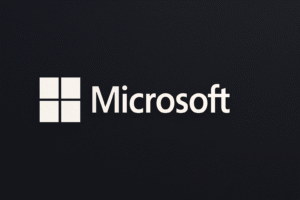In today’s fast-paced financial landscape, effective budgeting and managing expenses require more than just good intentions. The increasing complexity of personal finances—driven by digital subscriptions, online shopping, and various payment methods—has made it essential for individuals to consistently monitor their spending. However, many people find the process of tracking their expenses overwhelming and cumbersome, often leading to incomplete or inaccurate financial records. This article explores practical methods to help you track your spending efficiently without losing motivation or feeling stressed.
Market Impact of Financial Awareness
The global movement towards personal financial awareness reflects a broader trend toward financial literacy. According to a recent survey by the Financial Literacy Survey Initiative, nearly 60% of Americans report feeling stressed about their finances. The consequences of poor tracking can severely impact personal budgets, potentially leading to debt accumulation and reduced savings. As individuals become more aware of their financial behaviors, tools for budgeting and tracking expenses have gained popularity, with mobile apps and digital solutions witnessing a surge in adoption.
Practical Strategies for Monitoring Expenses
To demystify the process, let’s explore several effective strategies that simplify the act of tracking spending:
1. Set Clear Financial Goals: Establishing specific, measurable, attainable, relevant, and time-bound (SMART) goals can provide motivation. Whether saving for a vacation or reducing debt, clear goals clarify where your money should be allocated.
2. Choose the Right Tools: In an age of technology, relying on spreadsheets and traditional pen-and-paper methods may not suffice. Consider using budgeting apps such as Mint or YNAB (You Need A Budget). These platforms automatically categorize transactions and provide visual insights into spending habits.
3. Create Categories for Expenses: Dividing expenditures into categories—such as housing, food, entertainment, and savings—can help illuminate areas for potential savings. This approach allows for better management without being overwhelming and helps with future budgeting.
4. Automate Where Possible: Automating bill payments and savings transfers can alleviate the burden of manual tracking. When you streamline the payment process, you free up time and reduce the risk of missed payments and late fees.
Expert Opinion: The Role of Financial Advisors
Financial experts emphasize that tracking spending is crucial for long-term wealth creation. According to Dr. Olivia Martinez, a financial psychologist, “Creating a conscious relationship with money begins with awareness. Making small adjustments, such as regular expense check-ins, can significantly enhance one’s financial health.” Regular engagement with your finances does not have to be a chore; instead, it can transform into a habit that fosters better decision-making.
Furthermore, Dr. Martinez advocates for working with a financial advisor to construct personalized budgeting techniques. “An advisor can provide context and structure, making the tracking process less daunting and more tailored to individual needs,” she added.
Background: The Evolution of Financial Tracking
Historically, tracking personal spending methods have varied widely. From handwritten ledgers to early computer accounting software, the evolution has mirrored broader technological advancements. The introduction of smartphones and mobile banking has revolutionized the way individuals manage personal finances. According to a report by the Kaufman Center for Financial Services, more than 70% of millennials use mobile banking applications, highlighting an increasing preference for digital solutions.
As remote work and e-commerce continue to rise, tracking finances digitally has become necessary for maintaining financial discipline. The COVID-19 pandemic spurred a surge in online shopping and associated costs, making personal finance tracking even more relevant.
What’s Next: Building Sustainable Financial Habits
Looking forward, the goal of efficiently tracking spending without feeling overwhelmed hinges on building sustainable financial habits. This encompasses a commitment to regular review sessions—whether weekly or monthly—where individuals analyze their spending patterns, adjust budgets, and assess progress toward financial goals.
Additionally, the growing trend toward financial wellness encourages broader access to resources and education, empowering individuals to take control of their financial futures. As technology continues to evolve, innovations in financial tracking tools will likely create even more tailored experiences, enabling users to manage their finances effortlessly.
In conclusion, tracking spending does not have to be a source of stress. By leveraging modern tools, setting achievable goals, and fostering regular engagement with finances, individuals can create an efficient and empowering spending tracking system. This proactive approach not only alleviates stress but also lays the groundwork for financial stability and success.






